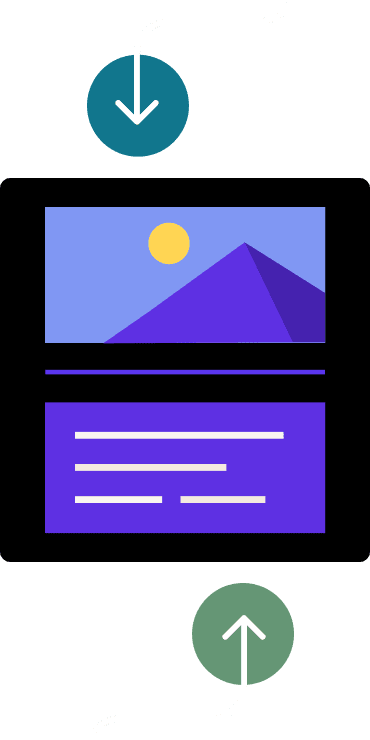An assumptive close is a powerful sales technique that positions your pitch around your client’s needs, seamlessly guiding them toward booking with you—where the client is already prepared to say ‘yes,’ without hesitation.

Imagine closing a sale without hesitation, that’s the power of the assumptive close.
With over over 50% of sales professionals reporting stagnant close rates, especially in independent businesses, it’s clear that relying on traditional methods may no longer be enough. The assumptive close offers a decisive advantage, helping you turn near-misses into confirmed sales. Ready to elevate your closing game? Keep reading to discover how this technique can transform your approach and boost your success.
Jump to:
- What is an assumptive close?
- When to use an assumptive close
- How does an assumptive close work?
- Benefits of using an assumptive close
- How to use an assumptive close
- What to say during an assumptive close
- Complete more sales

Skip the back-and-forth: Schedule meetings, sessions, consultations, and more in one click.
What is an assumptive close?
The assumptive close is a sales tactic that uses specific phrasing, questioning, and action to close a sale. By understanding your ideal client, you’ll know when it’s appropriate to nudge them toward a sale, versus other clients who might need more nurturing. You can even incorporate an assumptive close into your sales pitch to smoothly lead the customer toward a purchase.
For example, when the client seems ready to purchase your services, your assumptive close could simply be sending a file that includes an interactive pricing guide, invoice, and contract. Your client will have everything they need to select the services they want and book with you.
What is a presumptive vs. assumptive close?
While the terms “presumptive” and “assumptive” are often used interchangeably, there’s a subtle difference between the two approaches. A presumptive close involves taking an even more direct stance, where you make an assumption about the client’s decision and proceed as if it’s already confirmed. For instance, instead of asking which service the client prefers, a presumptive close might involve saying, “I’ll go ahead and schedule your first session for Monday.”
The assumptive close, on the other hand, is slightly more subtle, guiding the client towards a decision while still allowing for their input. Both techniques aim to streamline the sales process, but the key difference lies in the level of assertion and the room left for the client’s feedback.
When to use an assumptive close
By understanding your leads and ideal clients, you’ll know when it’s appropriate to nudge them toward a sale, versus other clients who might need more nurturing. You can even incorporate an assumptive close into your sales pitch to smoothly lead the customer toward a purchase.
Once a potential customers indicates they’re ready to make a purchase, you then use a transition statement and start closing the sale. As long as they’ve shown interest in the sales conversation and are a good fit, they can be a successful sale using an assumptive close.
When not to use an assumptive close
While the assumptive close can be a powerful tool, it’s not always the best approach in every sales scenario. Avoid using this technique when your client has expressed hesitation, or uncertainty, or needs more information before making a decision. In these situations, pushing forward with an assumptive close might be overly aggressive and alienate the client.
Additionally, if you’re dealing with a highly analytical client who prefers to weigh all options before committing, an assumptive close might feel premature and disrupt their decision-making process. Instead, focus on building trust, addressing all concerns, and ensuring the client feels fully informed and comfortable before attempting to close the sale.
How does an assumptive close work?
The assumptive close is about understanding your client’s decision-making process and anticipating their needs. By assuming the sale is already a done deal, you can take proactive steps to guide your client towards finalizing it. This technique works effectively because it reduces any hesitation your client might feel by providing them with clear next steps, making the decision process feel effortless.
For instance, if you’re a sales rep or business consultant and know that your clients typically require testimonials before booking, you can front-load this information early in the sales conversation. By the time the client is ready to decide, you’ve already addressed their concerns, making it easy to transition to the close. Simply saying, “I’ll send over the contract and invoice now,” removes any friction and moves the process forward smoothly.
Pro tip
The assumptive close, like any technique, will work best if it fits your prospect’s personality. Since it instills a sense of urgency, it’s best for clients who are more likely to convert. Learn other closing techniques for clients who aren’t responsive to this one.
Benefits of using an assumptive close
Though it might feel like an approach that could irk potential clients, the assumptive close is one of the most effective sales conversion strategies.
As long as you’re using this strategy with the right leads, it can have the following benefits:
- Increases revenue: By streamlining the decision-making process, the assumptive close can help boost your close rates and, subsequently, your revenue.
- Enhances client satisfaction: Clients appreciate the efficiency and clarity this approach provides, as it respects their time and decision-making process.
- Builds sales confidence: The assumptive close empowers you as a salesperson, giving you the confidence to lead the conversation and close deals without hesitation.
- Provides instant gratification: It allows clients to take immediate action, offering them the satisfaction of quickly and easily finalizing their purchase.
How to use an assumptive close
When you gather information about your leads, do you send a questionnaire or schedule a discovery call? However you do, this is the point where you can determine if you can use an assumptive close.
Say the client is an exact match with your ideal customer in terms of budget, timeline, and needs. In this case, you can assume that they’re highly likely to book with you. If so, you can move forward with any of the following options:
- Over the phone, let the client know exactly how they can book with you. Even if they haven’t given you an affirmative “yes” yet, laying out the next steps can move them forward.
- If you’re communicating via email, you can send an all-in-one booking file using a tool like HoneyBook. Let your clients select their services from a list of options, sign a contract, and pay an invoice within one file.
If you aren’t used to this strategy, you might feel like you’re being aggressive. But, the prospect can always let you know if they aren’t ready or need more information first. It’s better to get the booking process started with a client who’s ready rather than risk them dropping out of your sales process.
Ideally, your initial discussion with your prospect shows them how your service will perfectly solve their problem. Then, you can move forward and close the sale. If you’re not sure whether they’re ready yet, make sure you’ve met these conditions:
- The prospect knows they’re the decision-maker
- You’ve built trust with the prospect
- The prospect clearly understands the features and benefits of your service
- You’ve addressed all the client’s questions and objections so far
- You’ve picked up on buying signals from your prospect
- You’re at a point in the sales process where the close is the next logical step
A good assumptive close gives the prospect an “aha” moment when they realize they want to purchase.
What to say during an assumptive close
When you make an assumptive close, remember you’re not asking permission to make the sale. You have to presume that you’ve made the sale and are just settling the final details.
You can split this presumptive close into two parts. The first focuses on how your service helps your client. In this process, you usually affirm their decision to choose your service over other options. In the second part, you ask about the purchase. This can be straightforward, like asking how the client plans to pay (ACH transfer, credit card, etc.).
You can also ask assumptve closing questions to guide them to payment, like “What type of credit card will you be using?” or “Would you like to set up autopay?” These questions help get them in the mindset that they’re already in the booking process.
Pro tip
Your close is strong if you know your service well enough to communicate how it will make potential clients’ lives easier. Make sure you’ve prepared to answer any questions they may have.
Two-part assumptive closes
In the two-part assumptive close, the first part reassures the client by reminding them why your service is perfect for them. In the second part, you harness this extra comfort, so they’re more agreeable toward the less comfortable subject of sealing the deal.
The best close is one you tailor for your client based on what you’ve learned about their needs. But here are some two-part assumptive close examples you can base yours on:
- “I think you’ll love our fitness class. It focuses on low-impact workouts, so it’s perfect for your knees, and the trainer’s very hands-on, so they can always adjust your workload to your level. Would you rather sign up for the Sunday or the Tuesday class?”
- “Swimming’s a great way to maintain flexibility, strength, and stamina. I’m glad you’re getting started with the hobby. Which swimming starter kit would you like to get?”
One-part assumptive closes
If you feel like your prospect is comfortable, your close can be the second part. The best one–part close is quick and simple—asking one clear, direct question about the purchase.
Some examples of one-part closes include:
- What day is best for you to start your subscription?
- Which tier would you like to sign up for?
Complete more sales
The assumptive close is one of the best techniques to help you consistently hit your sales goals because it centers the entire process around your client’s needs and journey. By proactively guiding your client through the final steps, you make it easy for them to say “yes” without feeling pressured or rushed.
HoneyBook’s all-in-one business management platform can help your independent business close more clients by creating interactive files containing multiple parts of your sales and booking process. This makes the assumptive close even more effective by reducing the steps your client needs to take to complete the sale, thereby increasing your close rates and ensuring a smooth client experience.




